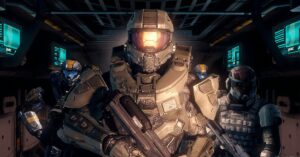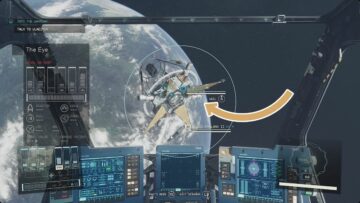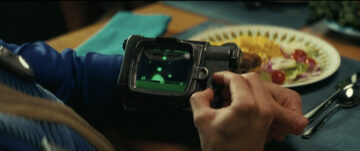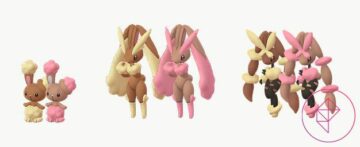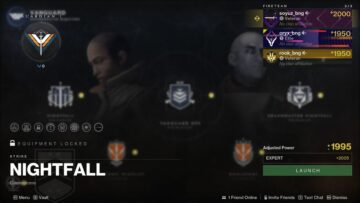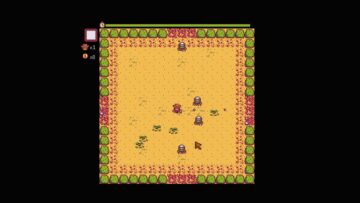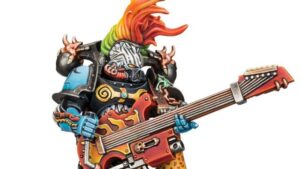It used to be that tactical role-playing games were an esoteric and underrepresented genre that existed mainly in the 16-bit past. Not so now, thanks in large part to Square Enix, which these days loves nothing more than to place low- to medium-budget bets on every niche nook and cranny enjoyed by its fandom and represented in its back catalog. Earlier this year, the publisher released Triangle Strategy with Nintendo. In November, it will publish a remaster of the classic Tactics Ogre. Sandwiched between them, on Sept. 22, comes The DioField Chronicle, an unheralded, humble, and curious diversion from the genre orthodoxy.
In contrast to those other two games, and other genre stalwarts like Fire Emblem, The DioField Chronicle dispenses with a movement grid, and with turns. This is a loose, free-flowing, mildly hectic game that plays out in real time. You field a squad of four units and control them rather like the hero units in a real-time strategy game or a MOBA. You point and click to move them around the battlefield and flick restlessly from one unit to the next, commanding to use their abilities, heal, or get out of trouble, always with one wary eye on what’s happening on the rest of the field.
The underlying mechanics and mathematics might be similar to those of a turn-based tactical RPG, but the feel is very different. This is not a game of chess in which you carefully plot and optimize your every move. It is a game of multitasking and quick, on-the-fly prioritization. One thing hasn’t changed, though: Placement is everything. Many of your units’ skills do damage over an area, in a cone, or in a broad swath, so you’ll want to line these up carefully to pick off as many enemy units as possible. Additionally, if one of your warriors attacks an enemy from behind, you get an ambush bonus that doubles your damage, so flanking and manipulating the enemy with MMO-like pulling and tanking tactics are essential.
Image: Lancarse/Square Enix
All told, it’s a fun and absorbing, if slightly stress-inducing, tactical battle system. There are four character classes — archer, cavalry, warrior, and magic user — and you’ll typically pick one of each for your squad. As well as individual leveling and equipment for each character, there are class-wide skill trees, and auxiliary characters can be added to each of your four unit slots (if they belong to the same class) to increase your skill repertoire. You can also equip Magilumic Orbs to unleash attacks from huge, Final Fantasy-style summons.
There’s a pleasing mesh of stuff to consider here. It’s a little hard to tell how deep the game will run from the demo that’s currently available, but the early indications are that Square Enix and co-developer Lancarse have wisely kept things small-scale but impactful. The numbers of enemy units are low, but they hit quite hard, and can take chunks out of your combatants’ health. The battles are streamlined but fairly high-risk, which keeps them both tense and manageable (certainly if you’re using a controller, as I was on PlayStation 5; the PC version supports mouse and keyboard, which will likely be a more swift and natural way to play the game).
The frustrating thing is how much time The DioField Chronicle spends away from its pleasingly economical mesh of systems and its fun, fast-paced battlefield tactics, and how little life it has when you’re following the story and the characters’ stiff interactions. Notwithstanding some elegant character art from Taiki and Isamu Kamikokuryo, the game takes place in a drab, airless world of medieval politicking and mercenary maneuvers that’s hard to invest in.

Image: Lancarse/Square Enix
The plot has something to do with a once-peaceful island blessed with powerful magic resources, a great evil, warring factions, and proud aristocratic houses. Characters bearing names like Fredret, Iscarion, and Waltaquin speak lifeless cliches and jargony exposition at one another. It doesn’t help that the budget for things like environment art and vocal performance was clearly very limited, or that the game’s color palette is so coolly muted. In between missions, our hero Andrias can roam around extremely plain and claustrophobic barracks to talk to other characters, shop, craft, and tinker, but this section of the game feels at least two hardware generations out of date. Maybe three.
It all comes back to life on the battlefield, but it may be only the most committed and curious fans of the tactical RPG genre that push through to get to the good stuff. Nonetheless, this is a game that, within its limited scope, is digging something interesting out from deep in its chosen niche.
The DioField Chronicle is headed to Nintendo Switch, PlayStation 4, PlayStation 5, Windows PC, Xbox One, and Xbox Series X.


